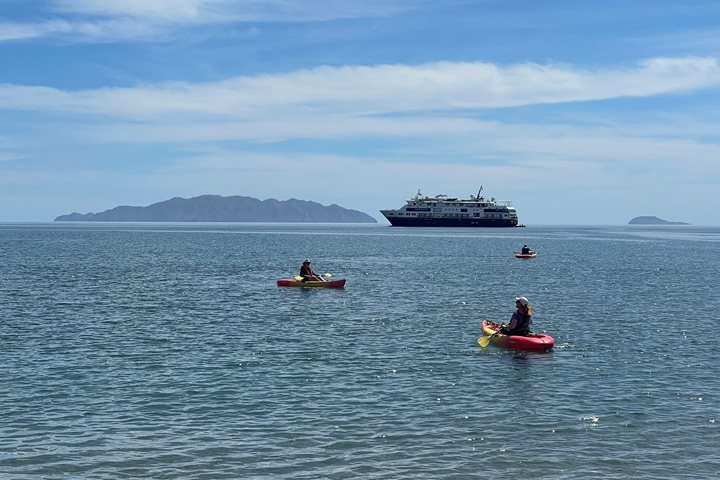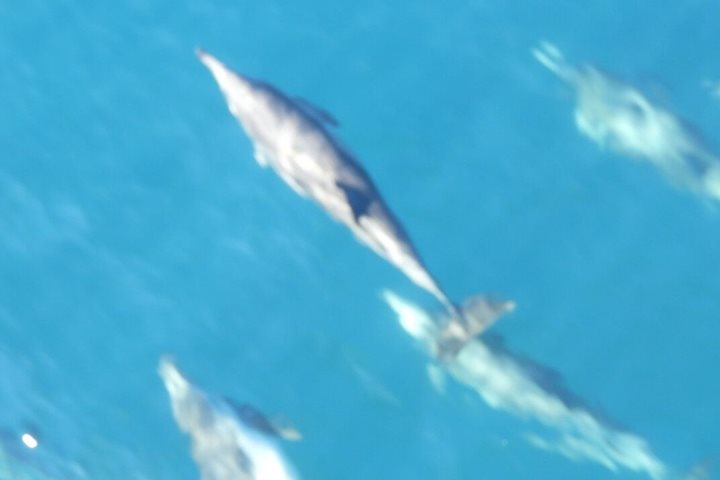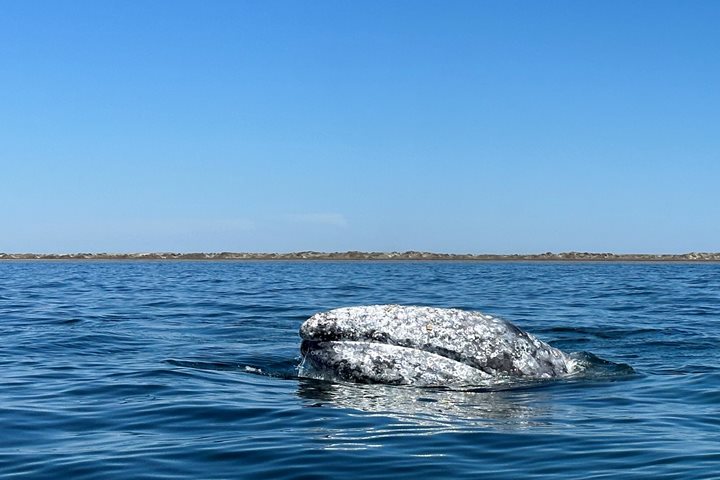A soft cover of fog enveloped our ship and an easy-riding Pacific swell made for a quiet and comfortable early morning on board National Geographic Sea Bird. As the mists lifted, the mountainous outline of Isla Santa Margarita hove into view. Punta Tosca, at the southern tip of that rugged island marked our first look at the outer boundary of Bahia Magdalena. Several humpback whale sightings and many gulls and shearwaters later, we tucked into the rocky arms of La Entrada, the entrance into this vast and magnificent coastal lagoon. Skirting the edge of Isla Magdalena, we sailed north along the inside channel of the bay as bottlenose dolphins rode alongside our bow and magnificent frigatebirds soared overhead.
Anchored in the south by two rocky chunks of exotic terrain, Isla Magdalena soon morphs into 50 miles of pristine sand dunes and mangrove-lined channels. Shorebirds worked the tidal mudflats along the Hull Canal, while royal terns, snowy and great egrets, great blue herons, and osprey hoped for fish. Many western grebes with their elegant white necks winter here, though the graceful bottlenose dolphins often stole the show as continued northbound.
Our first gray whale blow came just after we passed the distinctive high dune called Colina Coyote, and soon we had spotted four pairs of mother and calf California gray whales in the area we call the nursery. Several more cow/calf pairs were sighted near the fishing town of Pto. A. Lopez Mateos. Carlos shared a talk about these unusual coastal whales in the morning, and we are all very excited about our adventures in small boats tomorrow.
In the late afternoon light, we walked, photographed, and jumped off the dunes; some found coyotes scavenging in the tidal area, while others enjoyed the starburst patterns left in the sand by fiddler crabs. We’ll dream of desert whales tonight, drifting at anchor in the mouth of solitude—La Boca de la Solidad.







